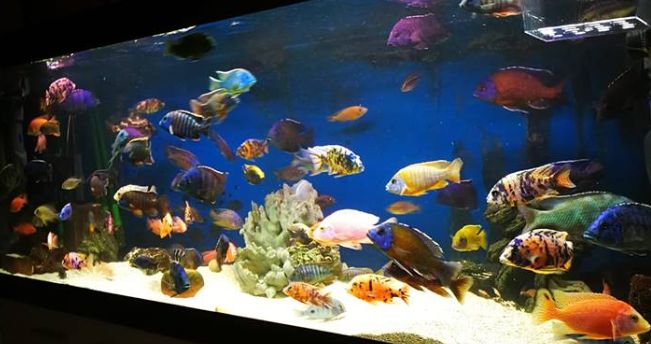
There are many options when it comes to the substrate one uses in an aquarium. Substrate options condensed into a table are:
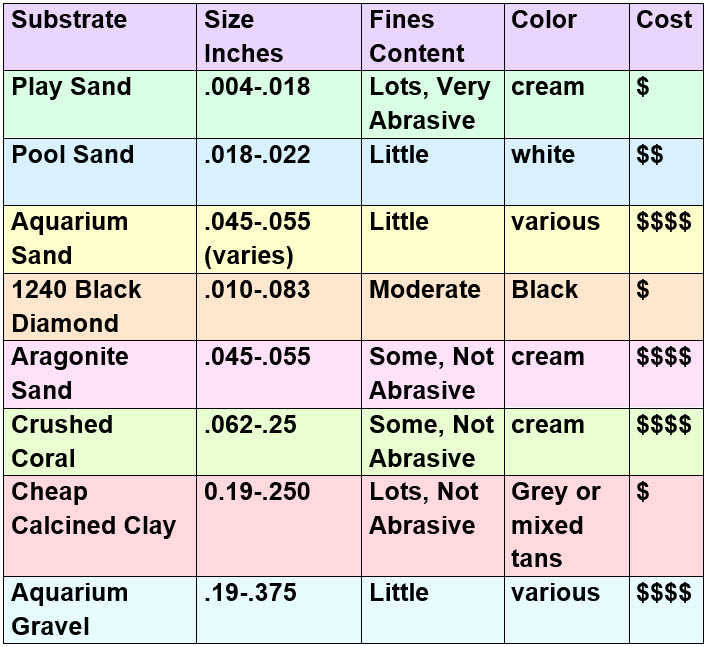
My recommendation is “natural” aquarium gravel. The cream through brown varied color hides accumulated detritus and feces. Mono-colored substrate such as sand or black diamond simply look really bad when fish poop, which is something fish do ALL the time.
The only gravel not recommended is pea gravel. If you want unhealthy fish just use a gravel with a diameter greater than a barley grain (0.3 inches, 7 mm). Food will get trapped in large quantities and decomposing food is not healthy for fish.
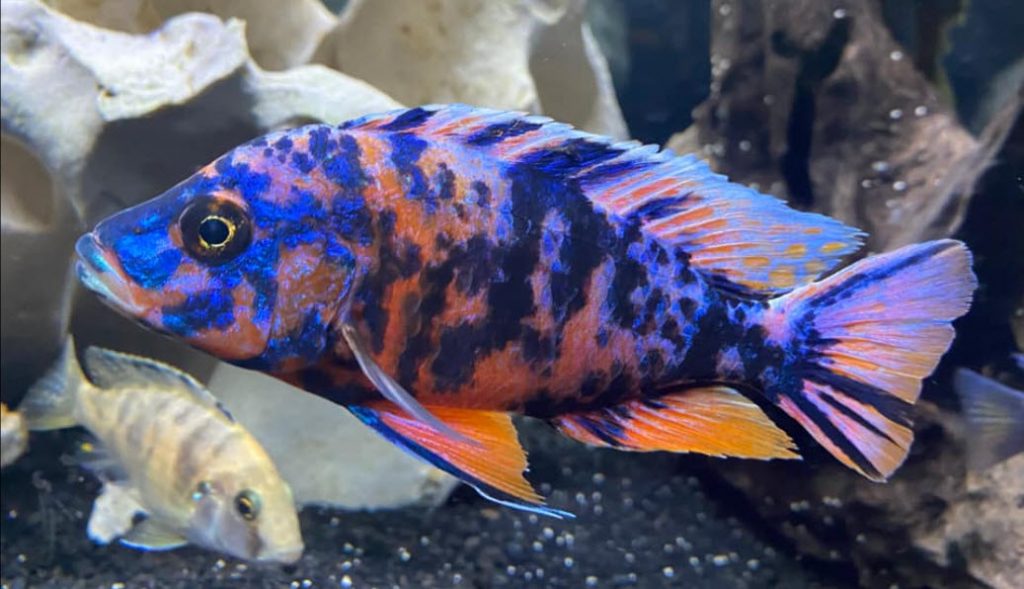
Abrasion
The cost of the abrasion factor is something to consider. A magnetic pump might only last six months to a year in a tank with play sand as a substrate. The same pump can go for four to eight years in an aquarium with aquarium gravel.
Now if one has small powerheads and wavemakers at $10 a pop this is no big deal. But if one has an FX6 canister filter it becomes a big deal. The FX6 motor costs $150 and the impeller assembly is $60. The amount of $210 every six months to a year is a steep price to pay. I would never use play sand with an FX6 canister filter.
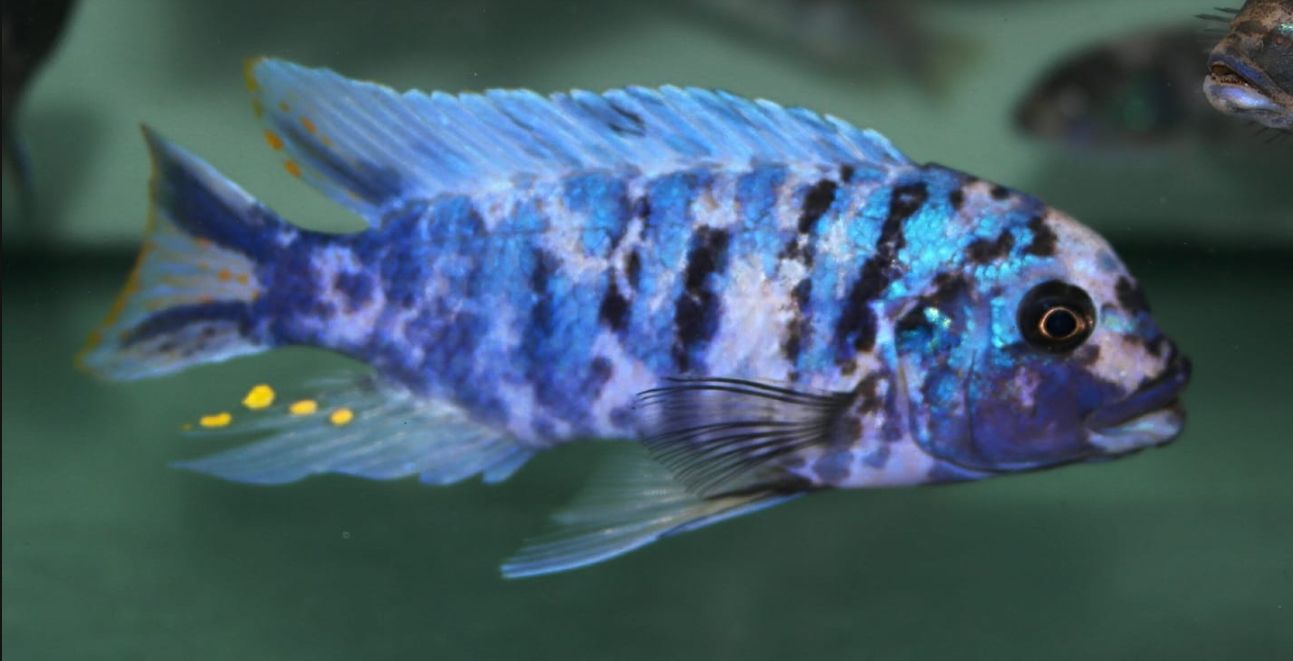
Barbels and Abrasive Media
There is a myth that corydoras will loose their barbels if put in with gravel or blasting media as a substrate. There are TWO things needed to cut or abrade anything, a sharp edge AND a force pushing the tissue into the sharp edge. As corydoras hunt for food with their barbels they only lightly move the barbels among the substrate particles. There is no force involved at all. So the barbels do NOT wear away or are cut away.
There is a lot of research which says this barbel “erosion” is from bacteria, not mechanical erosion. This research is pretty extensive and not something one can argue with: “The relation of taste buds to their nerve fibers”, Torrey, 1934, “Electron microscope observations on chemo and mechanoreceptive cells of fishes”, Zellforsch, 1961, “Structure and function in the catfish”, Alexander, 1965, “Fine structure of terminal buds on the barbels of some fishes”, Hirata, 1966, “Structures and functions of the sense of taste in the catfish (Ictalurus natalis) Brain”, Atema, 1971, “Surface morphology of taste buds in catfish barbels”, Ovalle, 1977, “Electron microscopy of terminal buds on the barbels of the silurid fish, corydoras paleatus”, Fujimoto, 1980, “Microtubule formation in regenerating terminal buds or the Silurid Fish, Corydoras aeneus”, Shiba, 1982,
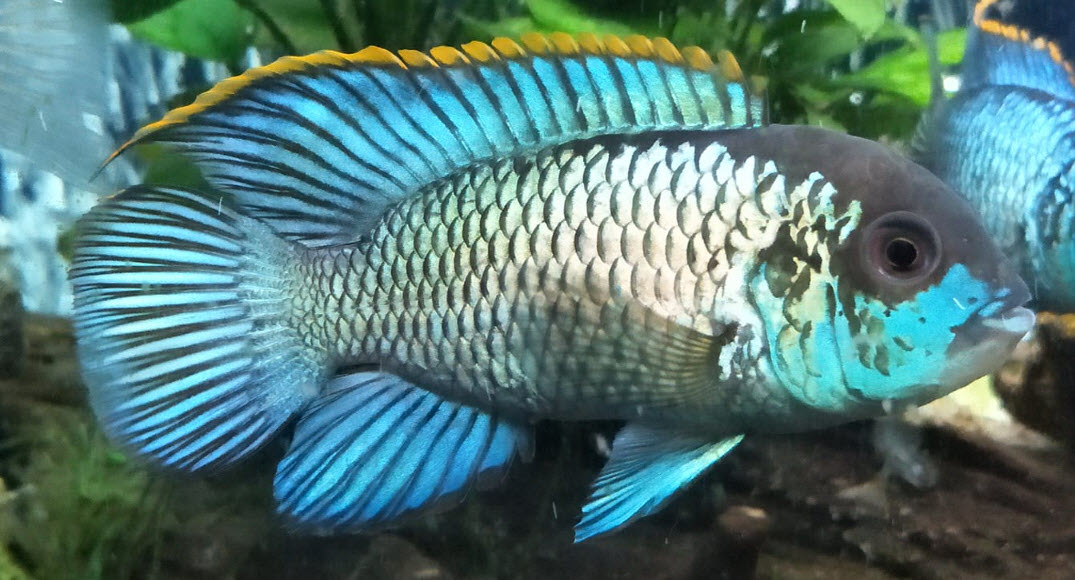
Cory of Aquarium Co-op has a video where he pulls up the bottom of a stream in Venezuela that has a healthy population of corydoras. The bottom is largely sharp angular rock pieces, NOT sand. The corydoras have no problem with such a substrate in an aquarium.
What can happen with substrate over 3/16 inch in diameter is that food gets caught down between the particles of substrate. This food rots and produces bacteria and bacterial toxins. Another thing that can happen even with sand is that the water circulation is deficient in the aquarium. This allows a brown mulm to build up on the floor of the aquarium. This mulm is filled with bacteria.
These bacteria in turn infect the barbels of the corydoras and rots them away. Corydoras are from very clean, bacteria free water and don’t handle high bacterial loads very well. They do best with gravel less than 3/16 of an inch in diameter and a wavemaker positioned to keep the substrate free of brown mulm.
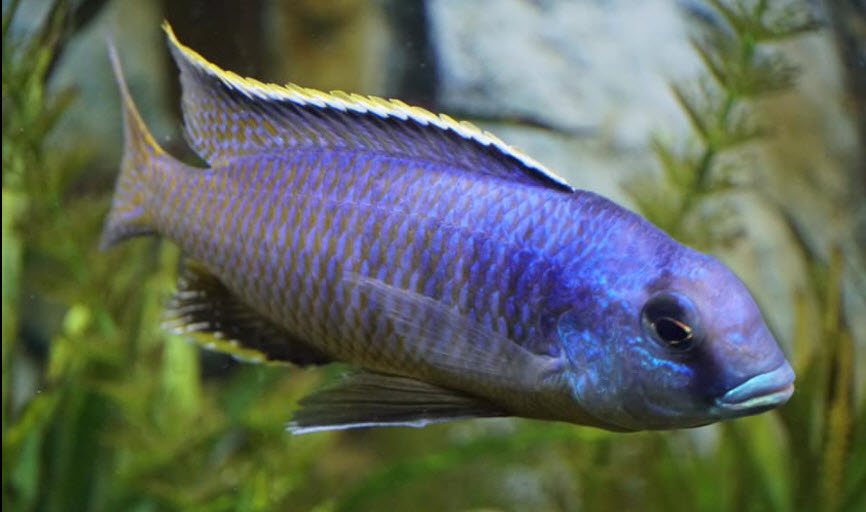
Loaches and Sand
A similar myth has to do with loaches and sand. A comment on social media was as follows:
“Sand substrates are needed for are kuli loaches or another type of loach that likes to dig, burrow and hide in the substrate“
Two words are key here: “likes” and “needed”. The term “likes” is anthropomorphism. Fish don’t “like” anything. Kuhli’s might well burrow in sand but in a gravel tank they just hide somewhere else. They don’t “need” sand. I’ve kept all sorts of loaches like kuhlis in gravel bottom aquariums. They did very well. Indeed, they had no difficulty burrowing in the gravel and would often disappear for weeks on end.
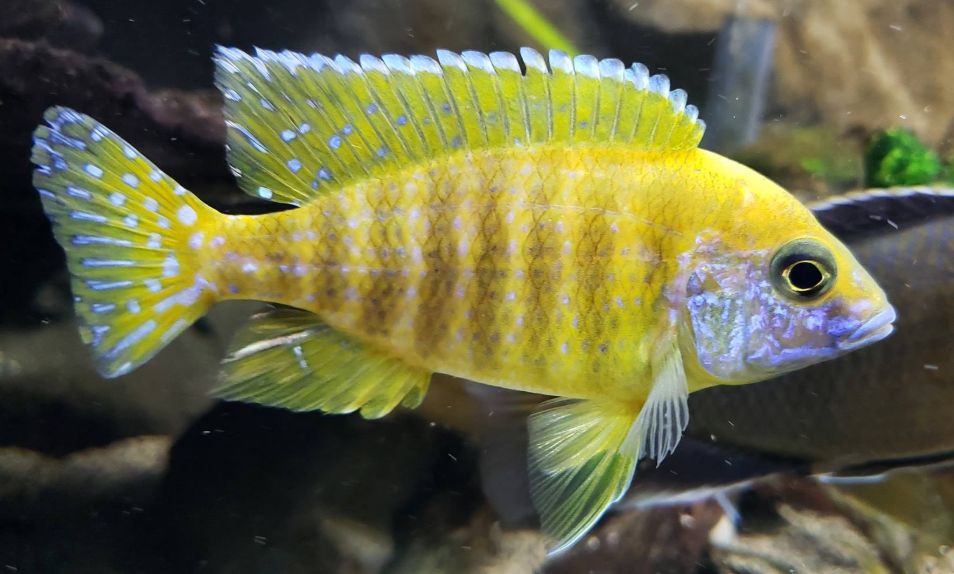
Substrate as a Biofilter
One important thing to remember about substrate. The surface area of the substrate can as a WEAK biofilter. Beneficial bacteria need two thing:
- They need surface area to attach to and multiply on
- They require rapid water flow over that surface, preferably a type of rapid surface flow called a “turbulent flow” (as opposed to something called “laminar flow”).
Things like substrate which are just in the aquarium but have no flow into them of note cannot function well as a biomedia. They simply have too little flow into them. So when we say aquarium gravel can act as a biofilter we’re talking about a very low capacity for biofiltration.
The idea that substrate is important as a place for beneficial bacteria to grow was tested. The tests and the scientific literature say the substrate in even a poorly filtered aquarium only provides 10% to 20% of the filtration. The tests are at this site:
6.5.2. Substrate as a Filter
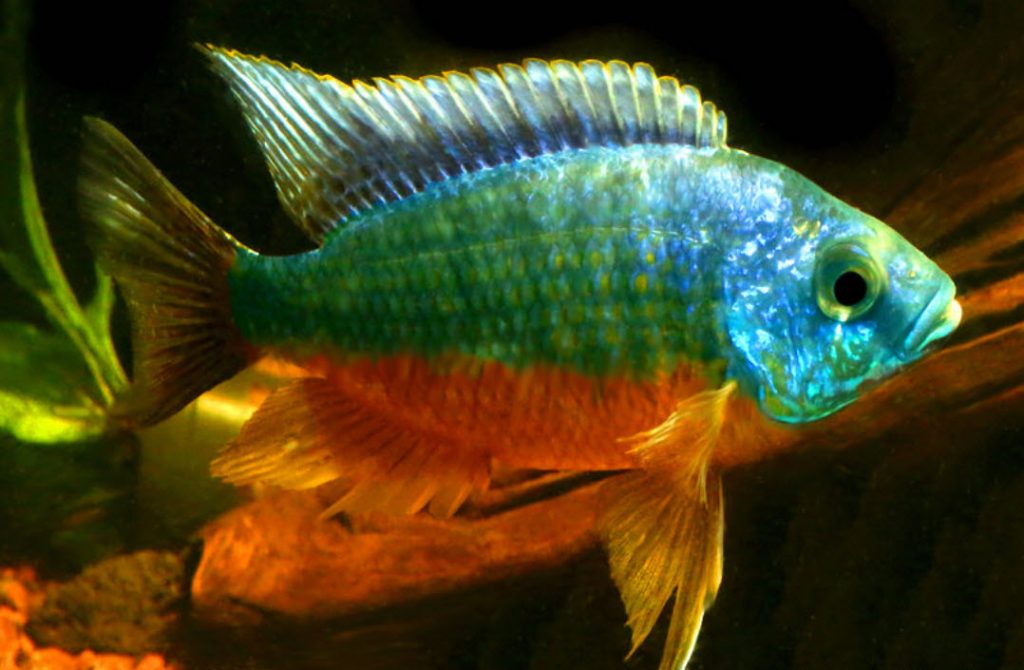
Aquarium gravel does do a small amount of biofiltration simply because its surface area is so large. Of course if the gravel is in the form of an undergravel filters all that analysis changes. Gravel in an undergravel filter, especially if it is powered by a power head, can be an excellent biofiltration media.
Mother Nature is quite flexible. It is possible to force the substrate and the ornaments in an aquarium to do the biofiltration. If one does something like only using sponge filters in an aquarium and rinsing those sponge filters out thoroughly under running water once a week, one will force the substrate and ornaments to become the biofilter. This is a quite acceptable way to do it. But do not try this with heavy stocking.
Note that aragonite or coral substrate raise the pH of the water to 7.6 to 7.9 They do not raise the pH much above 7.9. They also do not lower the pH of a water with a high pH.
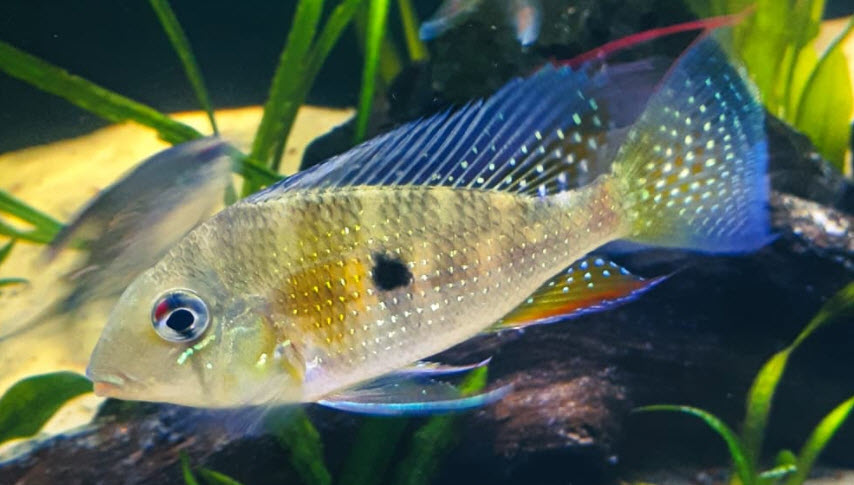
Cleaning Substrates
All substrate share one common problem having to do with cleaning. There are four possible cleaning scenarios:
- Substrate cleaned frequently (like once a week or every two weeks)
- Substrate NEVER cleaned
- Gravel used in an undergravel filter, regardless of cleaning schedule.
- Gravel cleaned infrequently (like very three to six months)
The first three scenarios do not have any problem. But if the hobbyist cleans a substrate infrequently, they can, in some VERY rare cases, severely stress or even kill their fish.
There is a condition of the substrate called hypoxic, with an oxygen saturation of 4% to 25%. Under these conditions some very foul bacteria can produce some bacterial toxins. If they are just left be they create no problems, as they never reach the water in the aquarium. But if you stir things up they can, in VERY rare cases, severely stress the fish and even kill them. We go over this rare occurrence in more depth in this link:
18.3. Cleaning the Substrate
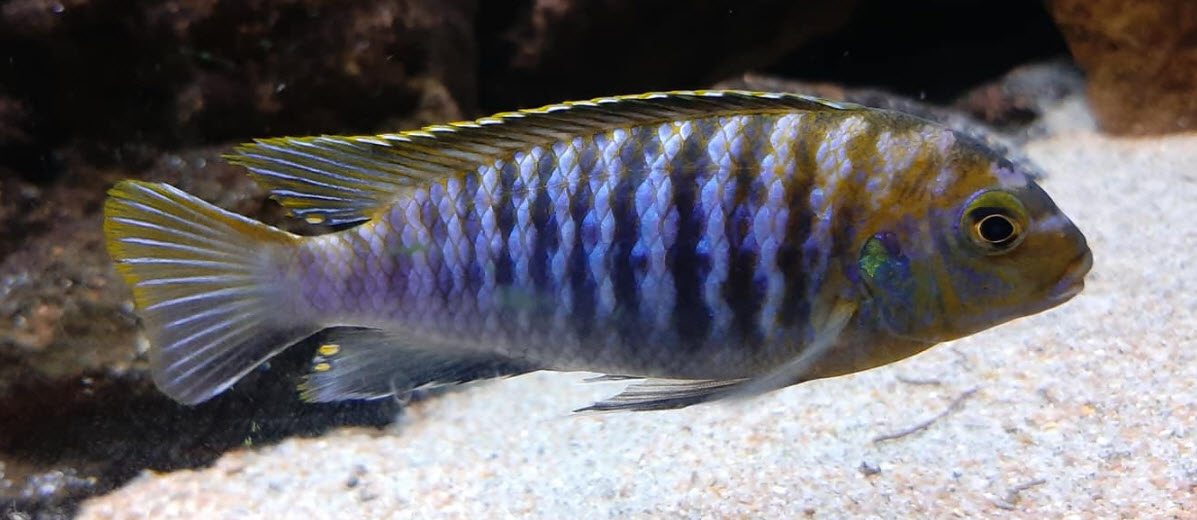
Permeability of Substrates
One concept which is difficult to get is that even a sand substrate will have limited exchange with the water column of dissolved materials like oxygen and dissolved organic compounds. If one looks at cloudy water under a microscope one will see particles moving around somewhat like masses of chaotically colliding billiard balls. This is known as “Brownian Movement”. A related phenomenon is something called “diffusion”. “Diffusion” also moves chemicals around on a very small scale. What people do not realize is that this movement is going on 24/7 and results in very large movements over the course of even a week.
This movement on a very tiny scale is why a fluorescent dye added to the water column above a two inch deep sand substrate can be seen though the bottom glass of the aquarium in days to weeks after it is added to the aquarium. This is also why even a “deep sand bed” substrate in an aquarium absolutely never, ever, becomes truly oxygen free, i.e. anoxic.
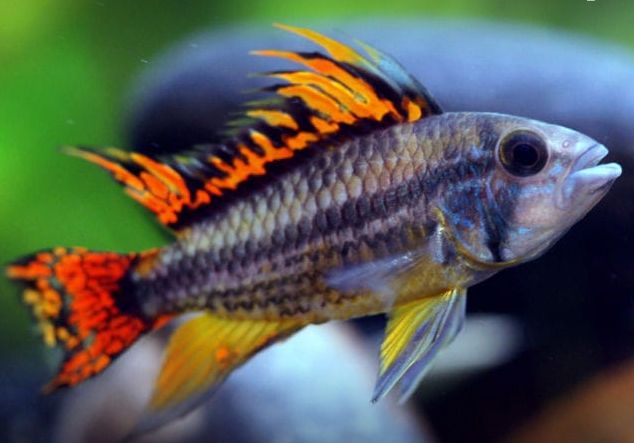
Myths About Substrates
Some of the myths about substrates are:
- Poisonous gas can form in the aquarium substrate
- Poisonous gas pockets form in sand if it is not mixed occasionally
- Gravel substrates are great biofilters.
- Gravel substrates should be frequently cleaned of all the horrid brown gunk that accumulates.
- Crushed shells and crushed coral as substrates are dangerous as they raise pH too much.
- Sharp gravel substrates will destroy the barbels of a corydora
- Some loaches need sand as a substrate
.
All these myths are false.
.
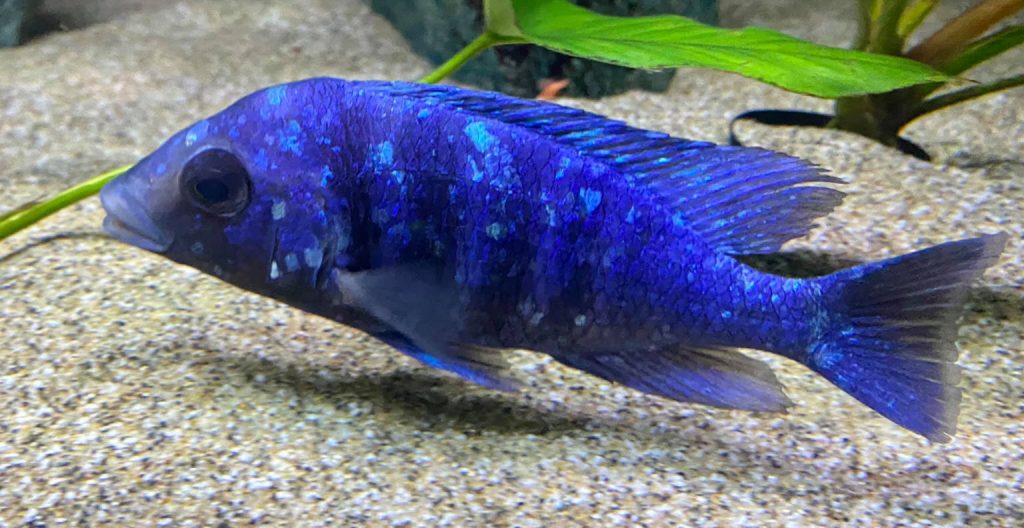
Several substrates are covered more extensively in the following web pages:
14.2.1. Sand
14.2.2. Gravel
14.2.3. Buffering Substrates
14.2.4. “Anaerobic” Substrates
.
Return to Equipment Menu
.
Aquarium Science Website
The chapters shown below or on the right side in maroon lead to close to 400 articles on all aspects of keeping a freshwater aquarium. These articles have NO links to profit making sites and are thus unbiased in their recommendations, unlike all the for-profit sites you will find with Google. Bookmark and browse!
.

Leave a Reply